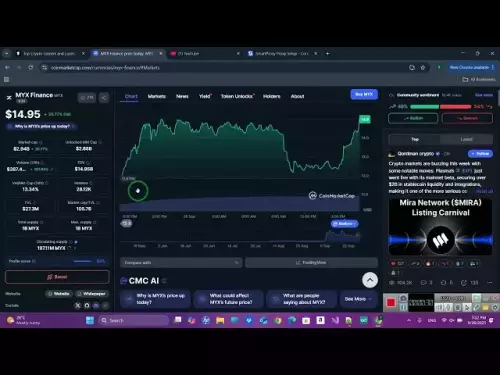-
 bitcoin
bitcoin $109547.008142 USD
0.04% -
 ethereum
ethereum $4011.838726 USD
-0.05% -
 tether
tether $1.000402 USD
-0.01% -
 xrp
xrp $2.798606 USD
0.88% -
 bnb
bnb $970.877944 USD
1.39% -
 solana
solana $202.237275 USD
-0.95% -
 usd-coin
usd-coin $0.999673 USD
0.00% -
 dogecoin
dogecoin $0.229294 USD
-1.15% -
 tron
tron $0.336370 USD
-0.45% -
 cardano
cardano $0.777260 USD
-1.66% -
 hyperliquid
hyperliquid $45.503019 USD
1.73% -
 ethena-usde
ethena-usde $1.000362 USD
0.01% -
 chainlink
chainlink $20.785303 USD
-1.10% -
 avalanche
avalanche $28.755822 USD
-0.11% -
 stellar
stellar $0.358303 USD
-0.48%
What to do if DeFi tokens plummet? What are the hedging strategies?
When DeFi tokens plummet, assess the situation, evaluate the project's fundamentals, and consider selling or using hedging strategies like diversification, stablecoins, and insurance to mitigate losses.
May 11, 2025 at 08:50 am
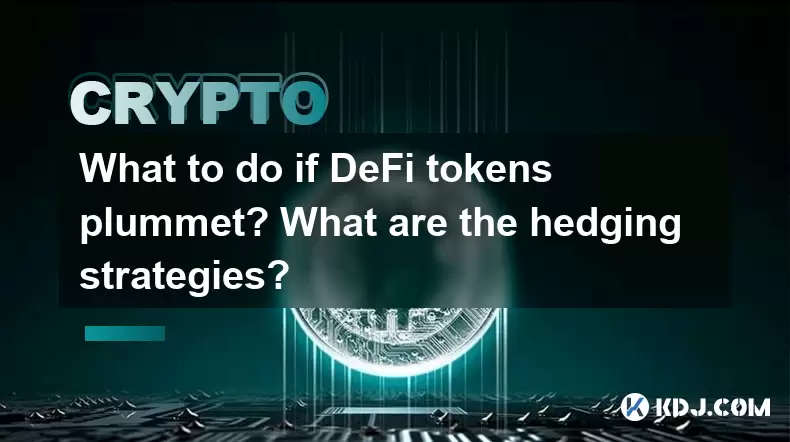
In the volatile world of decentralized finance (DeFi), token prices can plummet unexpectedly, leaving investors in a precarious position. Understanding what to do when DeFi tokens drop significantly and exploring various hedging strategies can be crucial for managing risk and protecting your investments. This article will delve into the steps you can take when faced with a plummeting DeFi token and discuss several hedging strategies to mitigate potential losses.
Immediate Actions When DeFi Tokens Plummet
When you notice that your DeFi tokens are plummeting, it's important to act swiftly but thoughtfully. The first step is to assess the situation. Determine if the drop is part of a broader market trend or specific to the token you hold. Check news and social media for any announcements or events that might have triggered the decline.
If the drop is specific to your token, evaluate the fundamentals of the project. Look at the team behind the project, the technology, and the token's utility. If the fundamentals are still strong, the drop might be a temporary market reaction, and holding could be a viable strategy.
However, if you determine that the token's value is unlikely to recover, consider selling to minimize losses. It's crucial to set a stop-loss order beforehand, which automatically sells your tokens when they reach a certain price, to prevent further loss.
Diversification as a Hedging Strategy
One of the most effective hedging strategies in DeFi is diversification. By spreading your investments across different tokens and projects, you can reduce the risk associated with any single asset. Diversification doesn't guarantee profits or protect against losses, but it can help balance your portfolio.
To diversify your DeFi investments, research and select a variety of tokens. Look for projects with different use cases, such as lending platforms, decentralized exchanges, and stablecoins. Allocate your funds across these different categories to create a balanced portfolio.
Using Stablecoins for Stability
Another hedging strategy involves using stablecoins. Stablecoins are cryptocurrencies designed to maintain a stable value, often pegged to a fiat currency like the US dollar. By holding a portion of your portfolio in stablecoins, you can protect your capital from the volatility of other DeFi tokens.
To implement this strategy, convert a portion of your DeFi tokens into stablecoins. You can do this on decentralized exchanges (DEXs) like Uniswap or SushiSwap. Once you have stablecoins, you can hold them in your wallet or use them in DeFi protocols to earn yield while maintaining stability.
Leveraging DeFi Insurance
DeFi insurance is an emerging hedging strategy that can protect your investments from various risks, including smart contract failures and hacks. Platforms like Nexus Mutual and Unslashed Finance offer insurance products that cover losses from DeFi protocols.
To use DeFi insurance, choose a reputable insurance provider and select the appropriate coverage. You'll need to pay a premium for the insurance, but it can provide peace of mind and financial protection. Follow these steps to get started:
- Visit the insurance platform's website and create an account.
- Browse the available insurance products and choose one that suits your needs.
- Calculate the premium based on the coverage amount and duration.
- Pay the premium using the platform's accepted cryptocurrencies.
- Receive your insurance policy and monitor it for any updates or claims.
Utilizing Options and Futures
Options and futures are financial derivatives that can be used to hedge against price movements in DeFi tokens. These instruments allow you to bet on the future price of an asset without owning it directly.
To use options in DeFi, find a platform that offers DeFi options, such as Hegic or Opyn. Here's how to get started:
- Create an account on the options platform.
- Deposit funds into your account to purchase options.
- Choose the DeFi token you want to hedge and select the appropriate option contract.
- Buy the option and monitor its performance.
Futures work similarly, but they involve an agreement to buy or sell an asset at a future date. Platforms like dYdX offer DeFi futures. To use futures:
- Sign up for an account on the futures platform.
- Fund your account with the required collateral.
- Select the DeFi token and choose a futures contract.
- Enter the futures position and monitor it until the contract expires.
Dollar-Cost Averaging (DCA)
Dollar-cost averaging (DCA) is a strategy that involves investing a fixed amount of money at regular intervals, regardless of the token's price. This can help mitigate the impact of price volatility and reduce the risk of investing a lump sum at a peak price.
To implement DCA in DeFi, set up a schedule for your investments. For example, you might decide to invest a certain amount of stablecoins into a DeFi token every week. Here's how to do it:
- Choose the DeFi token you want to invest in.
- Determine your investment amount and set up a recurring transaction on a DEX or through a DeFi platform.
- Monitor your investments and adjust your strategy as needed.
Frequently Asked Questions
Q: Can I use multiple hedging strategies at once?A: Yes, you can combine multiple hedging strategies to create a more robust risk management plan. For example, you might diversify your portfolio, hold stablecoins, and use options to hedge against specific tokens.
Q: How do I know which DeFi insurance policy to choose?A: When selecting a DeFi insurance policy, consider factors such as the coverage amount, the premium cost, the reputation of the insurance provider, and the specific risks covered. It's important to read the policy details carefully and compare different options before making a decision.
Q: Is it possible to hedge against all types of risks in DeFi?A: While hedging strategies can mitigate many types of risks, it's not possible to hedge against all risks completely. Some risks, such as regulatory changes or black swan events, are difficult to predict and hedge against. However, a well-diversified portfolio and multiple hedging strategies can help manage the most common risks.
Q: How often should I rebalance my diversified DeFi portfolio?A: The frequency of rebalancing your DeFi portfolio depends on your investment goals and the volatility of the market. Some investors rebalance quarterly, while others do it monthly or even weekly. It's important to monitor your portfolio regularly and adjust your allocations to maintain your desired level of risk and diversification.
Disclaimer:info@kdj.com
The information provided is not trading advice. kdj.com does not assume any responsibility for any investments made based on the information provided in this article. Cryptocurrencies are highly volatile and it is highly recommended that you invest with caution after thorough research!
If you believe that the content used on this website infringes your copyright, please contact us immediately (info@kdj.com) and we will delete it promptly.
- Digital Asset Treasuries, M&A, and the Crypto Berkshire Hathaway: A New Era
- 2025-09-29 02:25:14
- PEPE Price Prediction: Meme Coin Mania or Fading Fad?
- 2025-09-29 03:05:13
- HBAR, Crypto, Buy Now: Decoding the Hype and Finding the Real Gems
- 2025-09-29 03:05:13
- DeepSnitch AI: Your Crypto Fortune Teller for 2025?
- 2025-09-29 02:25:14
- Investors, Ethereum, and Citigroup: Navigating the Crypto Landscape in 2025
- 2025-09-29 03:18:09
- BlockchainFX, Dogecoin, and Crypto Coins: A New York Minute on the Future
- 2025-09-29 02:30:01
Related knowledge

How to track DeFi activity on a block explorer
Sep 04,2025 at 05:36pm
Bitcoin's Role in Decentralized Finance1. Bitcoin remains the cornerstone of the cryptocurrency ecosystem, serving as both a store of value and a benc...

What is the difference between DeFi and CeFi? An article analyzing the advantages and disadvantages of both
Jun 13,2025 at 03:57am
Understanding the Foundations of DeFi and CeFiTo fully grasp the difference between DeFi (Decentralized Finance) and CeFi (Centralized Finance), it’s ...
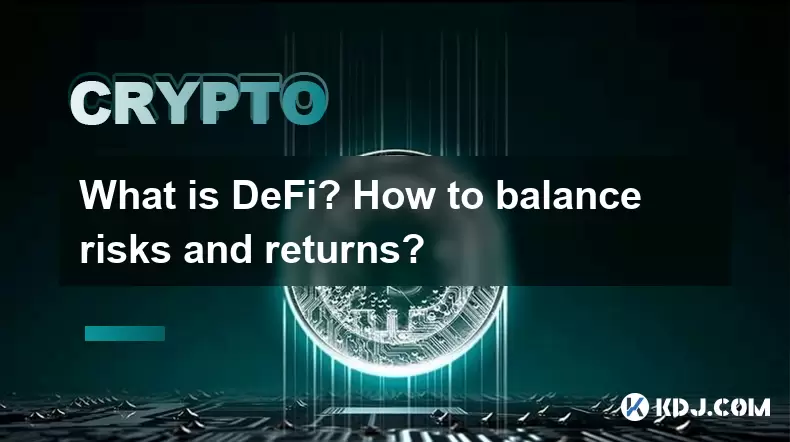
What is DeFi? How to balance risks and returns?
May 31,2025 at 12:22pm
What is DeFi? How to Balance Risks and Returns? Decentralized Finance, commonly known as DeFi, represents a revolutionary shift in the financial ecosy...
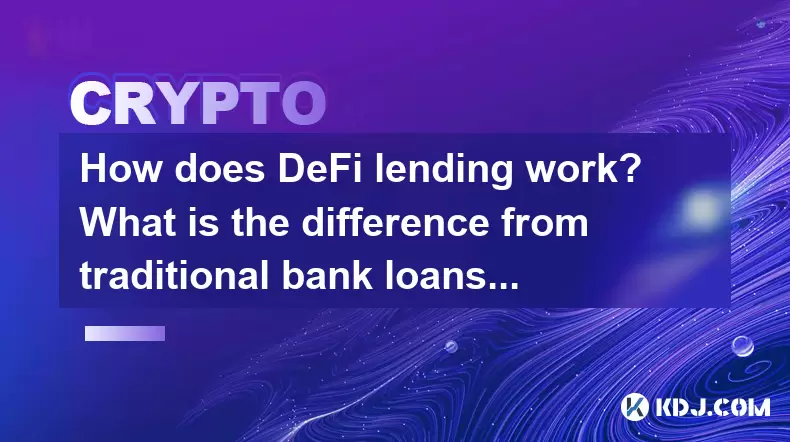
How does DeFi lending work? What is the difference from traditional bank loans?
May 29,2025 at 05:36pm
Introduction to DeFi LendingDeFi lending, or decentralized finance lending, represents a revolutionary shift in the way borrowing and lending are cond...
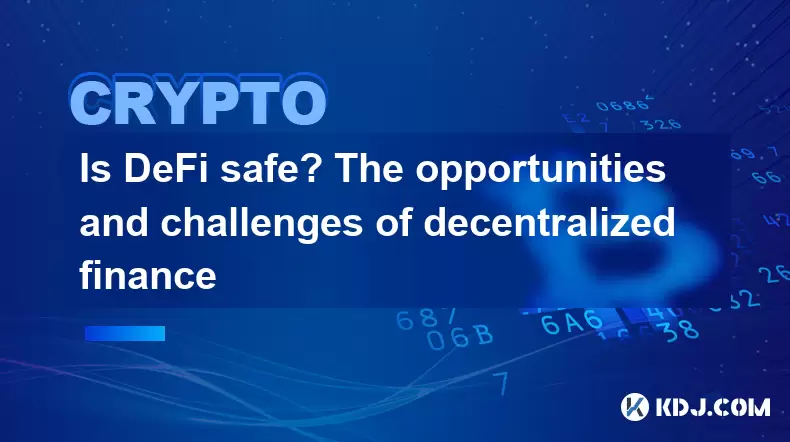
Is DeFi safe? The opportunities and challenges of decentralized finance
May 27,2025 at 02:28pm
Decentralized Finance, commonly known as DeFi, has revolutionized the financial landscape by offering a range of financial services without the need f...
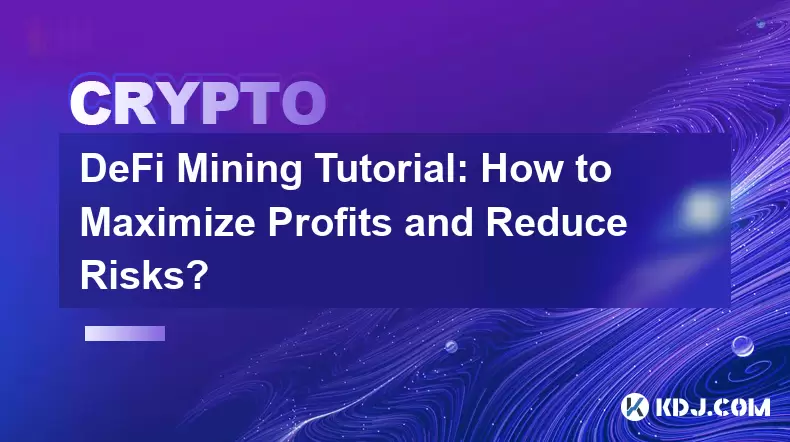
DeFi Mining Tutorial: How to Maximize Profits and Reduce Risks?
May 27,2025 at 07:42am
DeFi, or Decentralized Finance, has opened up a new world of opportunities for crypto enthusiasts looking to maximize their profits through various mi...

How to track DeFi activity on a block explorer
Sep 04,2025 at 05:36pm
Bitcoin's Role in Decentralized Finance1. Bitcoin remains the cornerstone of the cryptocurrency ecosystem, serving as both a store of value and a benc...

What is the difference between DeFi and CeFi? An article analyzing the advantages and disadvantages of both
Jun 13,2025 at 03:57am
Understanding the Foundations of DeFi and CeFiTo fully grasp the difference between DeFi (Decentralized Finance) and CeFi (Centralized Finance), it’s ...

What is DeFi? How to balance risks and returns?
May 31,2025 at 12:22pm
What is DeFi? How to Balance Risks and Returns? Decentralized Finance, commonly known as DeFi, represents a revolutionary shift in the financial ecosy...

How does DeFi lending work? What is the difference from traditional bank loans?
May 29,2025 at 05:36pm
Introduction to DeFi LendingDeFi lending, or decentralized finance lending, represents a revolutionary shift in the way borrowing and lending are cond...

Is DeFi safe? The opportunities and challenges of decentralized finance
May 27,2025 at 02:28pm
Decentralized Finance, commonly known as DeFi, has revolutionized the financial landscape by offering a range of financial services without the need f...

DeFi Mining Tutorial: How to Maximize Profits and Reduce Risks?
May 27,2025 at 07:42am
DeFi, or Decentralized Finance, has opened up a new world of opportunities for crypto enthusiasts looking to maximize their profits through various mi...
See all articles






















